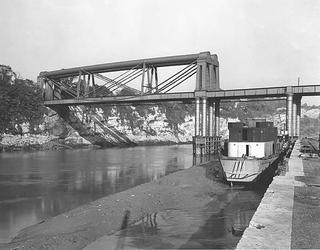
Boundary post, Manchester Sheffield & Lincolnshire Railway
- Made:
- circa 1847-1897 in unknown place
Boundary post, Manchester, Sheffield & Lincolnshire Railway, cast iron, with a rectangular base, four upright sides tapering inwards and a shallow four-sided pyramid on top. Has the initials MS & LR on each of the four upright faces. Believed to have been installed at Ulceby, North Lincolnshire.
Boundary marker, Manchester, Sheffield & Lincolnshire Railway, about 1847 to 1897. Boundary markers like this were used to clearly identify the limits of railway land and to distinguish them from adjacent property. They were typically used where it was difficult to install a fence or hedge, where there was a risk of encroachment by other landowners, or where there had been a dispute over land ownership. They also delineated one railway company’s territory from another’s, for instance to make it clear who was responsible for maintaining a particular stretch of line.
The Manchester, Sheffield & Lincolnshire (MSL&R) opened in 1847 to profit from the transport of minerals, particularly coal, across the north of England or, through connections with other railway companies, south to London. It also ran passenger trains connecting important northern towns and cities. At the end of the nineteenth century the MS&LR launched an ambitious plan to build its own line to London and in 1897 the company’s name was changed to the Great Central Railway. This boundary marker must therefore date from some point between 1847 and 1897. It is believed to have been installed at Ulceby, near Immingham in North Lincolnshire.
The boundary marker is a practical design in cast iron, possibly made in a foundry at one of the Manchester, Sheffield & Lincolnshire Railway’s works. It has four faces, each with the letters of the company name visible from whatever direction it is approached from. The top slopes downwards in a shallow, four-sided pyramid so that water runs off in all four directions and doesn’t pool to accelerate corrosion. It also has a very deep base that was buried deep in the ground, to discourage any disgruntled landowners from surreptitiously digging it up and moving it.
Details
- Category:
- Railway Infrastructure
- Object Number:
- 1988-7099
- Materials:
- iron
- Measurements:
-
overall: 76.2 x 30.48 x 30.48 cm
- type:
- boundary post
- credit:
- Puttick, D.A.




